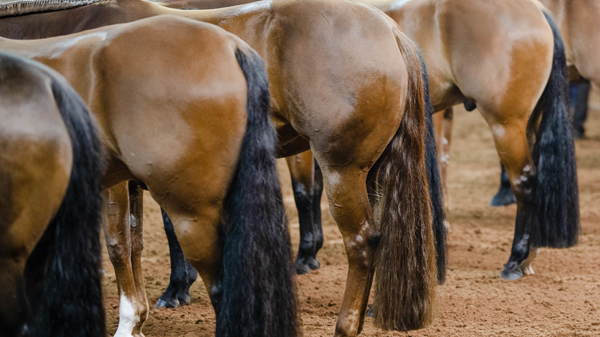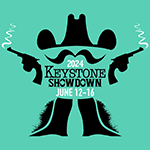We all know a horse that defies the odds regarding conformation flaws and winning. Several of the best horses throughout history have had conformation faults that common sense would tell you it shouldn’t even be sound, let alone a successful show horse. Yet, they somehow manage to win and stay healthy and sound throughout their show career.
Despite these anomalies that somehow seem to defy all logic, most trainers would agree that good conformation is a priority when buying a horse, especially a prospect.
GoHorseShow asked several top professionals their thoughts on conformation flaws that are deal-breakers when purchasing horses. They discussed the reasons they tend to stay far away from horses with certain conformation faults when evaluating prospects.
 Erin Lieurance – When it comes to buying a horse, I always look for a big solid round foot, making sure that both front feet are equal, and then from there, making sure all legs are straight, checking for blemishes, of course. You typically want a low-setting hock and, ideally, a short back. All these conformation qualities are helpful to longevity, strength, and soundness, no matter what kind of competition you are looking to do.
Erin Lieurance – When it comes to buying a horse, I always look for a big solid round foot, making sure that both front feet are equal, and then from there, making sure all legs are straight, checking for blemishes, of course. You typically want a low-setting hock and, ideally, a short back. All these conformation qualities are helpful to longevity, strength, and soundness, no matter what kind of competition you are looking to do.
 Leonard Berryhill – Calf knees. I can’t stand it! Every horse I’ve ever been around that has this flaw has struggled to perform and there are all kinds of soundness issues. Run far…run fast.
Leonard Berryhill – Calf knees. I can’t stand it! Every horse I’ve ever been around that has this flaw has struggled to perform and there are all kinds of soundness issues. Run far…run fast.
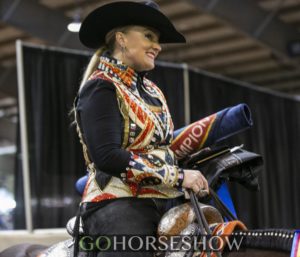 Katy Jo Zuidema – Keeping in mind that I mostly buy young prospects to finish and resell, rarely do I get the opportunity to buy a finished show horse. So, they have to be pretty, they must be stout, they need to jog. If they don’t jog well, they need to be big enough to sell as a true all-around horse down the road.
Katy Jo Zuidema – Keeping in mind that I mostly buy young prospects to finish and resell, rarely do I get the opportunity to buy a finished show horse. So, they have to be pretty, they must be stout, they need to jog. If they don’t jog well, they need to be big enough to sell as a true all-around horse down the road.
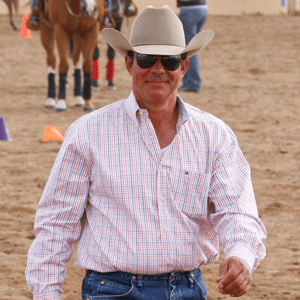 Troy Compton – I note the first thing I walk up to a horse is their overall impression. Are they balanced and attractive? Do they look curious and intelligent? Next, I assess their trapezoid (if you’re not familiar with the trapezoid and their angles, I highly recommend looking it up) and how they hang their neck. Even though they are technically two separate elements, I consider them one because of how they work together. I likely won’t be interested in the horse if these things are off. Next, I want the horse to stand with its neck at or below topline level. To be athletic and do the maneuvers we need them to do, that is the position they must have. A naturally high-necked horse isn’t going to work for me. I don’t want the horse’s neck to tie in too deep because they can’t get their shoulders up to perform athletic maneuvers.
Troy Compton – I note the first thing I walk up to a horse is their overall impression. Are they balanced and attractive? Do they look curious and intelligent? Next, I assess their trapezoid (if you’re not familiar with the trapezoid and their angles, I highly recommend looking it up) and how they hang their neck. Even though they are technically two separate elements, I consider them one because of how they work together. I likely won’t be interested in the horse if these things are off. Next, I want the horse to stand with its neck at or below topline level. To be athletic and do the maneuvers we need them to do, that is the position they must have. A naturally high-necked horse isn’t going to work for me. I don’t want the horse’s neck to tie in too deep because they can’t get their shoulders up to perform athletic maneuvers.
There are two other parts I’m going to look at on a horse; their head and their legs.
The head must be pretty with an intelligent, soft eye and a good swirl. I want the swirl between their eyes pretty close to the center. They need to have a good mouth, no parrot mouth, etc. They need to be put together so they can hang a bit well. I also like to push on their nose. If they push back and don’t give, that could be a deal-breaker for me.
When we move onto the legs, I want to make sure they are proportionate in their knees and even hocks. If they are even, then they will be balanced. Then, I look at their bone to see if it’s nice and strong to hold up to the training. They need to stand upright and be balanced on their legs. I don’t want a horse that is over at its knees. I would like to see their legs relatively blemish-free. A big thing that I think is lacking in today’s horses is good feet. I don’t want club feet or tiny feet. I am looking for solid feet because that is where your foundation begins.
All these things are of equal importance. I think many people start with movement, but I like to look at my horse first and make sure he checks all the boxes there before I move on to movement.
 Brad Ost – I may not have a popular answer, but I don’t specifically care a ton about conformation. I’ve seen plenty of great ones with conformation flaws. I am by no means saying it’s not essential, but I would never pass up a great one for a conformation flaw. Extreme vetting issues are more of a deal-breaker, in my opinion.
Brad Ost – I may not have a popular answer, but I don’t specifically care a ton about conformation. I’ve seen plenty of great ones with conformation flaws. I am by no means saying it’s not essential, but I would never pass up a great one for a conformation flaw. Extreme vetting issues are more of a deal-breaker, in my opinion.
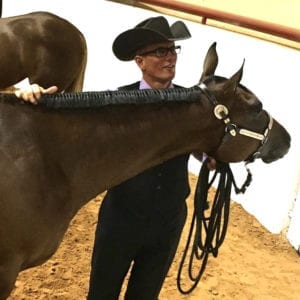 Tim Gillespie – The ideal horse would be one that would do well in the performance halter. Straight legs, not having a high/low front foot, good hocks, strong backed. It is so hard to find a great horse – a great horse could have a crooked front foot and remain sound or long-backed, but I’m not particularly eager to buy a horse with these problems. I wouldn’t say I like to buy a horse that toes in. I like the neck angle to be good. Not too high or too low. It’s crazy how a horse can have some of these problems, and they are out there winning. I’m more forgiving on older horses. Now if I’m buying a yearling, I don’t want them to have any of these problems.
Tim Gillespie – The ideal horse would be one that would do well in the performance halter. Straight legs, not having a high/low front foot, good hocks, strong backed. It is so hard to find a great horse – a great horse could have a crooked front foot and remain sound or long-backed, but I’m not particularly eager to buy a horse with these problems. I wouldn’t say I like to buy a horse that toes in. I like the neck angle to be good. Not too high or too low. It’s crazy how a horse can have some of these problems, and they are out there winning. I’m more forgiving on older horses. Now if I’m buying a yearling, I don’t want them to have any of these problems.
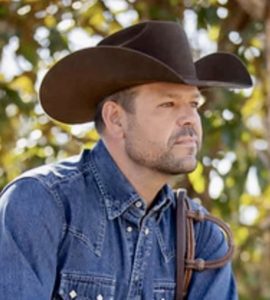 Jimmy Daurio – No horse is perfect, and many with conformational flaws go on to compete successfully. Certain conformation flaws in moderation are typically manageable, and the horse can have a successful show career. Such as – over in the knees, sickle hocked, slightly turned out in front limbs, club foot, and foot size. I find substantial red flags – OCD, kissing spine, and severe navicular changes. These things, in my opinion, are tough to manage, and if they get bad enough, they are career-ending.
Jimmy Daurio – No horse is perfect, and many with conformational flaws go on to compete successfully. Certain conformation flaws in moderation are typically manageable, and the horse can have a successful show career. Such as – over in the knees, sickle hocked, slightly turned out in front limbs, club foot, and foot size. I find substantial red flags – OCD, kissing spine, and severe navicular changes. These things, in my opinion, are tough to manage, and if they get bad enough, they are career-ending.
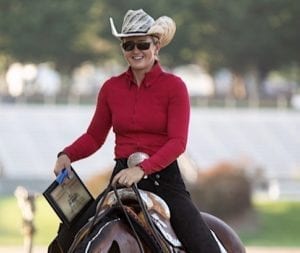 Kristy Starnes – We buy more prospects than finished horses, so conformation is essential. Horses with significant conformation defects as young horses usually do not stay sound for the long haul. Most horses are formed to function, and a well-built horse is always desired. But, of course, there is always the exception, and a horse that is not built great is an incredible performer. We prefer horses that are not long-backed and have good shoulder angles (not too steep). In prospects, most with conformation flaws in their legs, it will quickly show up in their movement.
Kristy Starnes – We buy more prospects than finished horses, so conformation is essential. Horses with significant conformation defects as young horses usually do not stay sound for the long haul. Most horses are formed to function, and a well-built horse is always desired. But, of course, there is always the exception, and a horse that is not built great is an incredible performer. We prefer horses that are not long-backed and have good shoulder angles (not too steep). In prospects, most with conformation flaws in their legs, it will quickly show up in their movement.
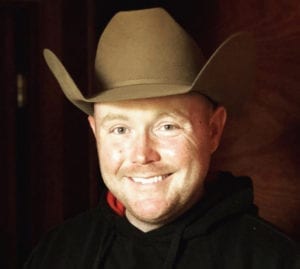 Blake Carney – Choosing a pretty horse with good confirmation goes long. With halter being a requirement for most associations’ high point awards and doing the all-around events, pretty can help you out! Also, good feet are essential. We see bigger horses on smaller feet, and I am making sure that we have great feet under us from the start.
Blake Carney – Choosing a pretty horse with good confirmation goes long. With halter being a requirement for most associations’ high point awards and doing the all-around events, pretty can help you out! Also, good feet are essential. We see bigger horses on smaller feet, and I am making sure that we have great feet under us from the start.
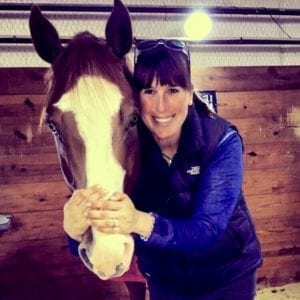 Megan Vanderslice – I honestly don’t have an extensive list of red flags. I have had some long-backed and pigeon-toed horses be some of my favorite show horses. I can overlook a lot if a horse goes around and does its job. I think a giant red flag for me would be too much knee. That is something you can’t ever change. I never buy horses for me to show, I buy for my clients. So, if it’s something they can deal with if it needs maintenance, I always give the go-ahead. I think a lot of great horses get overlooked for conformation flaws.
Megan Vanderslice – I honestly don’t have an extensive list of red flags. I have had some long-backed and pigeon-toed horses be some of my favorite show horses. I can overlook a lot if a horse goes around and does its job. I think a giant red flag for me would be too much knee. That is something you can’t ever change. I never buy horses for me to show, I buy for my clients. So, if it’s something they can deal with if it needs maintenance, I always give the go-ahead. I think a lot of great horses get overlooked for conformation flaws.
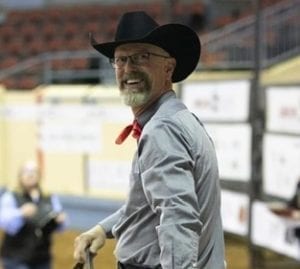 Kelly McDowall – I don’t have a conformation deal breaker. If they can do the job and the pre-purchase exam is acceptable to the veterinarian, the owner, and me, I’ll all in.
Kelly McDowall – I don’t have a conformation deal breaker. If they can do the job and the pre-purchase exam is acceptable to the veterinarian, the owner, and me, I’ll all in.
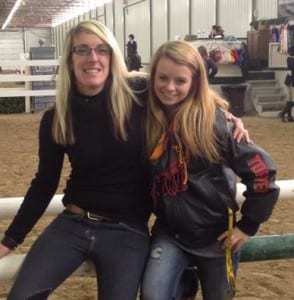 Jennifer Welhouse – If they’re over at the knee, they cannot jump. Super unsafe. Long-backed horses are susceptible to SI issues, especially with fences. They have to use their backs so much to jump. A low front-ended horse, or what people call downhill, is another big problem. They jump hard and are difficult to stay with, so for a customer, it’s a no-go.
Jennifer Welhouse – If they’re over at the knee, they cannot jump. Super unsafe. Long-backed horses are susceptible to SI issues, especially with fences. They have to use their backs so much to jump. A low front-ended horse, or what people call downhill, is another big problem. They jump hard and are difficult to stay with, so for a customer, it’s a no-go.
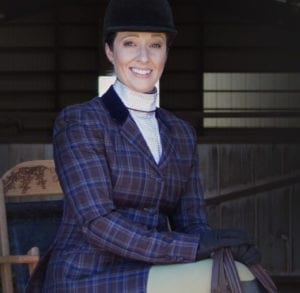 Alyse Roberts – Back at the knees. I feel like being back at the knees is just asking for soundness issues down the line. Even though it can make them appear very flat up front, I feel like longevity on them isn’t the greatest. In any discipline, long pasterns. I think ordinarily long pasterns can make for a floppy front leg, and there’s no real way to fix that. Straight shoulder, again goes with the movement up front and they usually have knees with a straight shoulder. When I watch them move around, I look for the ones that naturally want to carry their necks level and lope around everywhere.
Alyse Roberts – Back at the knees. I feel like being back at the knees is just asking for soundness issues down the line. Even though it can make them appear very flat up front, I feel like longevity on them isn’t the greatest. In any discipline, long pasterns. I think ordinarily long pasterns can make for a floppy front leg, and there’s no real way to fix that. Straight shoulder, again goes with the movement up front and they usually have knees with a straight shoulder. When I watch them move around, I look for the ones that naturally want to carry their necks level and lope around everywhere.
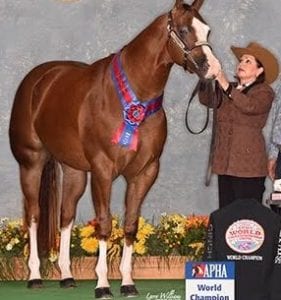 Jodi Finkenbinder – Two things would be a deal-breaker for me. I love pretty. I don’t want to feed an ugly horse. That head is the first thing I will see when I feed in the morning. I can’t do a lousy set of hocks either. They’ve got to be low set and not look like a German Shepard dog. I wouldn’t buy a terrible set of legs, just like a foundation in a house. They are only as good as the legs they stand on – so, pretty and legs. Pretty will be good conformation because destructive features would not be pleasing to look at. I’m also a sucker for a big, soft, kind eye.
Jodi Finkenbinder – Two things would be a deal-breaker for me. I love pretty. I don’t want to feed an ugly horse. That head is the first thing I will see when I feed in the morning. I can’t do a lousy set of hocks either. They’ve got to be low set and not look like a German Shepard dog. I wouldn’t buy a terrible set of legs, just like a foundation in a house. They are only as good as the legs they stand on – so, pretty and legs. Pretty will be good conformation because destructive features would not be pleasing to look at. I’m also a sucker for a big, soft, kind eye.
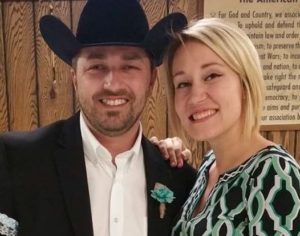 Ceralena Gray – For Jeremy and me, it’s long backed or high hocked horses. We want to see a short back with lower set hocks and knees when looking at a prospect. Those horses will naturally have a better self-carriage and will be easier for a non-pro to guide around down the road.
Ceralena Gray – For Jeremy and me, it’s long backed or high hocked horses. We want to see a short back with lower set hocks and knees when looking at a prospect. Those horses will naturally have a better self-carriage and will be easier for a non-pro to guide around down the road.
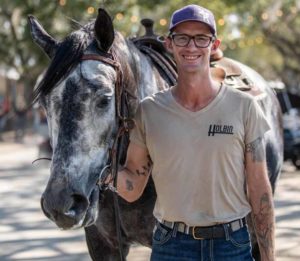 Julian Harris – I’ve had so many great horses that didn’t vet but never limped. You kind of hope for the best. As long as there are four legs and good feet and it can do the job it’s asked, it’s game on.
Julian Harris – I’ve had so many great horses that didn’t vet but never limped. You kind of hope for the best. As long as there are four legs and good feet and it can do the job it’s asked, it’s game on.
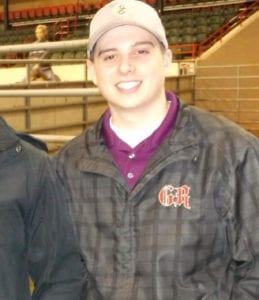 Austin Gooding – When I pick out a prospect, I try to look for balance. Something that doesn’t have a lot of set to their hocks, long in their pastern, long-backed, or one that’s neck comes out too high. When you start riding, those things can make your job more difficult. As much as we have to travel to some shows, it would help if you had a strong horse that can hold up soundness-wise, making that more challenging.
Austin Gooding – When I pick out a prospect, I try to look for balance. Something that doesn’t have a lot of set to their hocks, long in their pastern, long-backed, or one that’s neck comes out too high. When you start riding, those things can make your job more difficult. As much as we have to travel to some shows, it would help if you had a strong horse that can hold up soundness-wise, making that more challenging.
 Margaux Tucker – Front feet and leg angles – a horse with “high-low” (low heel on one foot, high heel on the other) usually has inconsistencies/lamenesses for life. It is hard to fix, hard to maintain, and hard to resell a horse with high-low until they are proven. Even then, it’s still hard for a new buyer to take the risk. A horse that is over in the knees or behind (calf kneed) can cause problems too. I wouldn’t say I like conformational flaws in the front end because of how much the horse’s body weight is already distributed through the front end.
Margaux Tucker – Front feet and leg angles – a horse with “high-low” (low heel on one foot, high heel on the other) usually has inconsistencies/lamenesses for life. It is hard to fix, hard to maintain, and hard to resell a horse with high-low until they are proven. Even then, it’s still hard for a new buyer to take the risk. A horse that is over in the knees or behind (calf kneed) can cause problems too. I wouldn’t say I like conformational flaws in the front end because of how much the horse’s body weight is already distributed through the front end.
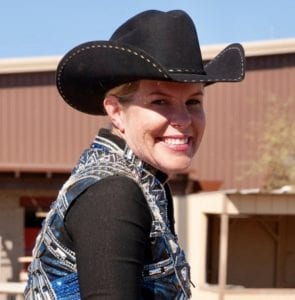 Kellie Hinely – I have no particular confirmation defect to keep me from buying a horse, other than a parrot-mouthed mare. If I like the horse and it is competing and sound, I’m willing to try.
Kellie Hinely – I have no particular confirmation defect to keep me from buying a horse, other than a parrot-mouthed mare. If I like the horse and it is competing and sound, I’m willing to try.
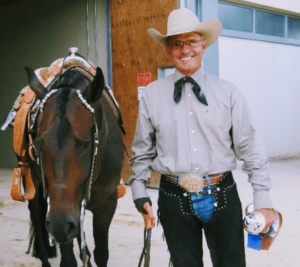 Steve Heckaman – I see the benefit of keeping the perspective positive and talking about what is desired and what should be avoided. There are several ‘deal breakers’ for me when evaluating conformation. While I can tolerate some moderate ‘hip-high,’ out-of-balance growth on a two-year-old, the topline should be smooth and firm, because that’s what we expect for quality performance, a balanced, steady ride from head to tail.
Steve Heckaman – I see the benefit of keeping the perspective positive and talking about what is desired and what should be avoided. There are several ‘deal breakers’ for me when evaluating conformation. While I can tolerate some moderate ‘hip-high,’ out-of-balance growth on a two-year-old, the topline should be smooth and firm, because that’s what we expect for quality performance, a balanced, steady ride from head to tail.
The heart girth should be deep and sit directly over the front elbow, while the wither should be prominent and ideally higher than the top of the croup. This structure encourages the shoulder to ‘lift’ the heaviest end while in motion. The back should be short with a long underline and a strong loin. These traits aid in the collection, and a horse is moving with a round back. The croup should be long and flat, with a hip that ties in just above the gaskin.
Balance in structure is evidenced by equal lengths of the neck, back, and hip. I have never had a great horse that didn’t have a great neck. I also like a relative straighter hock angle with some slope to pasterns on hind legs. Front legs should be straight from the shoulder through front feet looking from directly in front and have some slope to front pasterns with moderate length. Another deal-breaker would be a horse that is ‘back’ in its knee because of the increased pressure on the joint.


